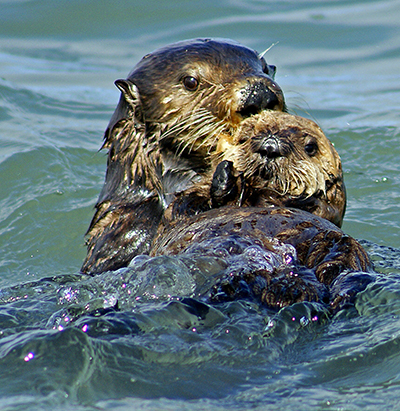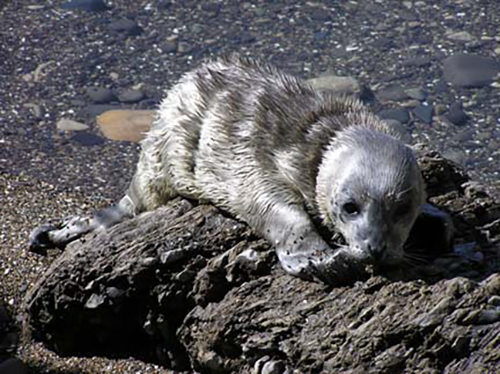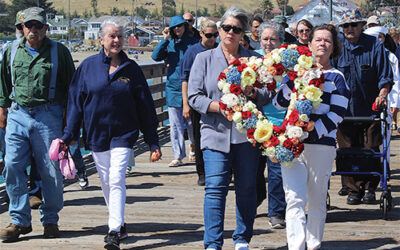Harbor Seal Pup on a mud flat.
It’s Time for Babies
It’s that time of year again for wildlife on the Central Coast. Birds and animals are matching up. Nests and dens are being constructed and new life is entering the world.
Many people are going to come across some newly born species of wildlife and with the best of intentions, will pick them up and move them or take them to wildlife rehabilitation centers when there was no reason to do so. Please don’t do this!
Do not remove young birds from nests. This practice is illegal and it usually results in birds dying from inadequate care.
If you find a baby bird or egg that has fallen from a nest, see if you can place them back in. Parent birds will not abandon them because of human scent. If a young bird is found on the ground and looks like it cannot fly, don’t remove it unless you are certain there are predators such as dogs or cats nearby.
Most young birds, when they first fledge or leave the nest, will stay on the ground anywhere from a few hours to a few days. If you feel you must move the bird, place it under some shrubs, not onto branches on a tree.
Leave fawns alone! Mother deer often leave their fawns in tall grasses or shrubbery while going off to forage. Moving the fawn in any way will cause the fawn to not be reunited with its mother and can be fatal.
The same goes for marine mammals. Baby harbor seals, sea lions, and sea otters are often left either on shore, on shoreline rocks, or afloat in the water while the parent is hunting. The mothers will return to find their offspring.
Harbor seal babies can swim upon birth and may be seen floating on the surface or most likely perched on top of a mud flat or rock. Pups are rarely abandoned and need to be nourished with their mother’s very rich milk that is near to impossible to duplicate at a rescue center. The survival rate of rescued harbor seal pups is low.

It’s the same with sea otters that are so buoyant when young they cannot really dive under the water. And while it is rare to find sea otters on land, a baby could be stowed on a beach or a rocky ledge.
Sea otters and harbor seals forage for food for sometimes up to 20 minutes so it is not unusual for a baby to be left alone crying. This does not mean the mother will not return.

While sea lions birth their young in colonies on isolated beaches you might come across a young sea lion on more populated beaches. Sea lions suffer from a variety of diseases and do sometimes come ashore in poor condition. This is a difficult call for observers but a call to a wildlife rescue center or area harbor patrol is not a bad decision. However, never approach or handle any sea mammal seen alone. There are stiff fines for this. Let the proper management people take control. They can make the correct decision as to whether the animal is in need of rescue.
If you are in doubt, or you have observed a baby animal for what seems to be a lengthy period of time without a parent returning, place a call to the appropriate wildlife organization or to local authorities.
Pacific Wildlife Care – (805) 543-9453
The Marine Mammal Center – (805) 772-1135- or 24-hour hotline (415) 289-7325. Morro Bay Harbor Control – (805) 772-6254
California Department of Fish & Wildlife-Central Region (559) 243-4005



